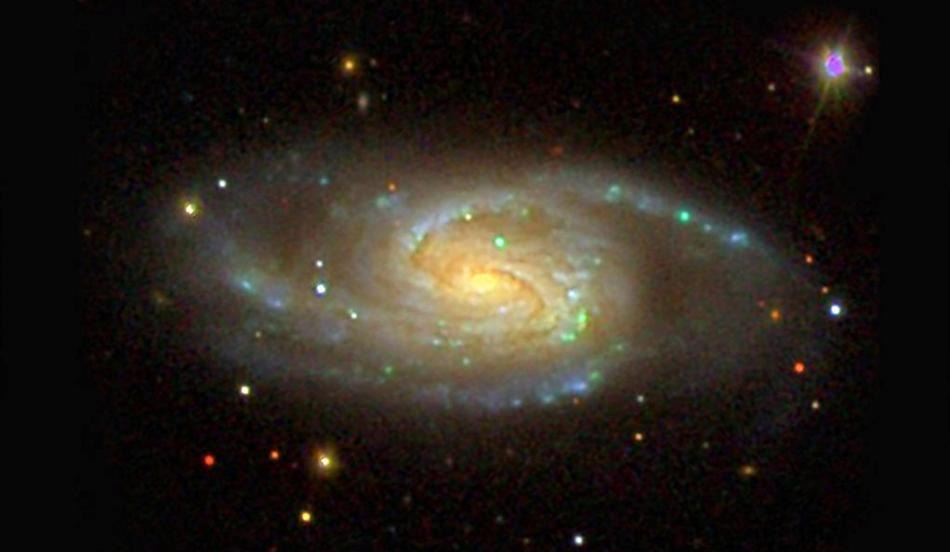Sep 21 2017
The Milky Way, the most-studied galaxy in the universe, may not be as typical as earlier thought, based on a new study.
 A three-color optical image of a Milky Way sibling. (Courtesy of Sloan Digital Sky Survey)
A three-color optical image of a Milky Way sibling. (Courtesy of Sloan Digital Sky Survey)
Home to Earth and its solar system, the Milky Way is also a host to several dozen smaller galaxy satellites. These smaller galaxies help in understanding the Milky Way itself besides orbiting around the Milky Way.
Early findings from the Satellites Around Galactic Analogs (SAGA) Survey specify that the Milky Way’s satellites are a lot more tranquil when compared to other systems of comparable luminosity and environment. A number of satellites of those “sibling” galaxies are aggressively pumping out new stars, however the Milky Way’s satellites are considered to be mostly inert, based on the observations of the Researchers.
According to the Researchers, this is important because several models for what is known about the universe depend on galaxies acting in a fashion similar to the Milky Way.
We use the Milky Way and its surroundings to study absolutely everything. Hundreds of studies come out every year about dark matter, cosmology, star formation, and galaxy formation, using the Milky Way as a guide. But it’s possible that the Milky Way is an outlier.
Marla Geha, Key Author of the Paper and Astrophysicist, Yale University
The SAGA Survey commenced five years ago with an aim to study the satellite galaxies around 100 Milky Way siblings. Until now, it has considered eight other Milky Way sibling systems, which according to the Researchers is a sample that is very small to make definitive conclusions. In the next two years, SAGA hopes to have analyzed Milky Way siblings.
However, the survey already has people talking. During a recent conference where some of SAGA’s initial findings were presented by Geha, another Researcher told her, “You’ve just thrown a monkey wrench into what we know about how small galaxies form.”
Our work puts the Milky Way into a broader context. The SAGA Survey will provide a critical new understanding of galaxy formation and of the nature of dark matter.
Risa Wechsler, Astrophysicist and SAGA Researcher, the Kavli Institute, Stanford University
Wechsler, Geha, and their team stated that they will continue to enhance the efficiency of discovering satellites around Milky Way siblings. “I really want to know the answer to whether the Milky Way is unique, or totally normal,” Geha said. “By studying our siblings, we learn more about ourselves.”
Other SAGA team members include Yao-Yuan Mao of the University of Pittsburgh, Erik Tollerud from the Space Telescope Science Institute, Benjamin Weiner of the University of Arizona, Rebecca Bernstein and Yu Lu of the Carnegie Institution for Science, Ben Hoyle of the Max Planck Institute for Extraterrestrial Physics, Sebastian Marchi and Ricardo Munoz of the University of Chile, and Phil Marshall of SLAC National Accelerator Laboratory. All are Co-Authors of the study.